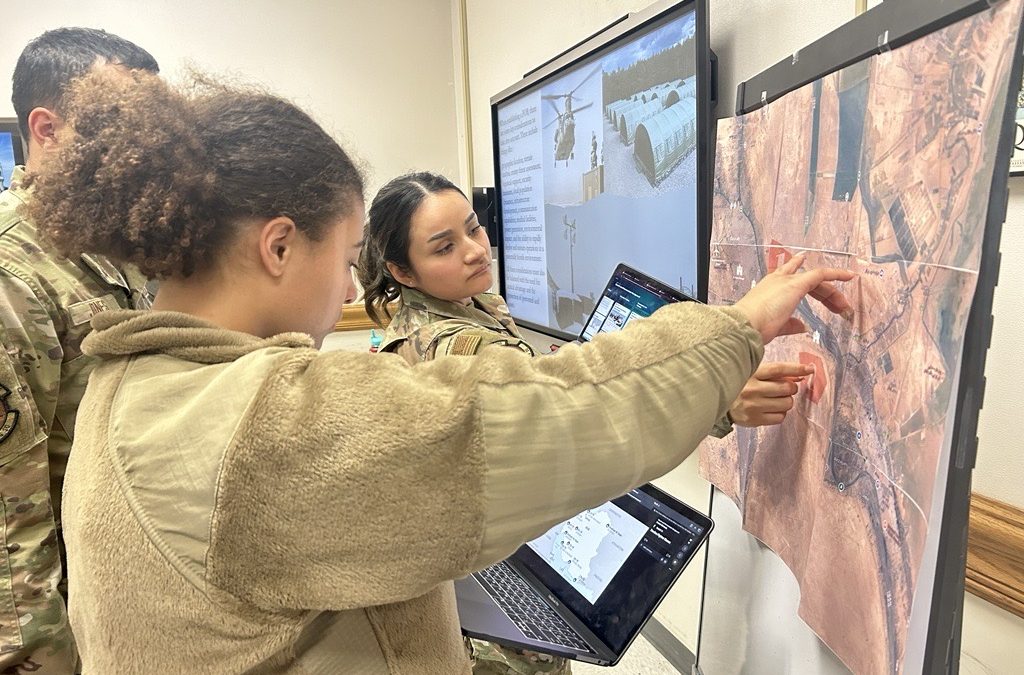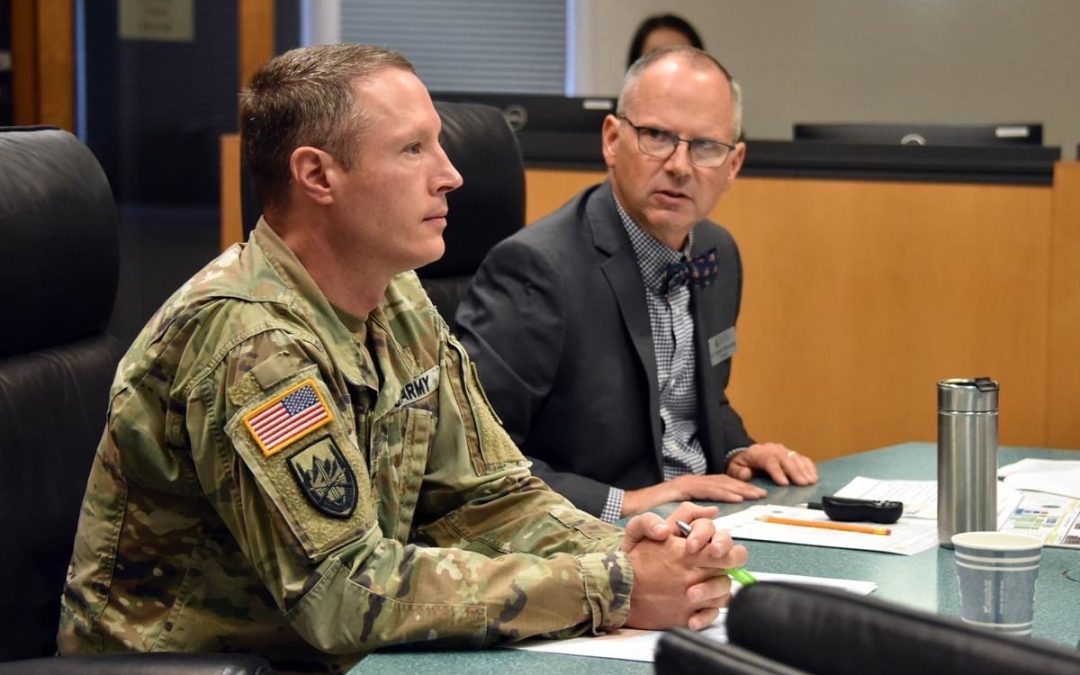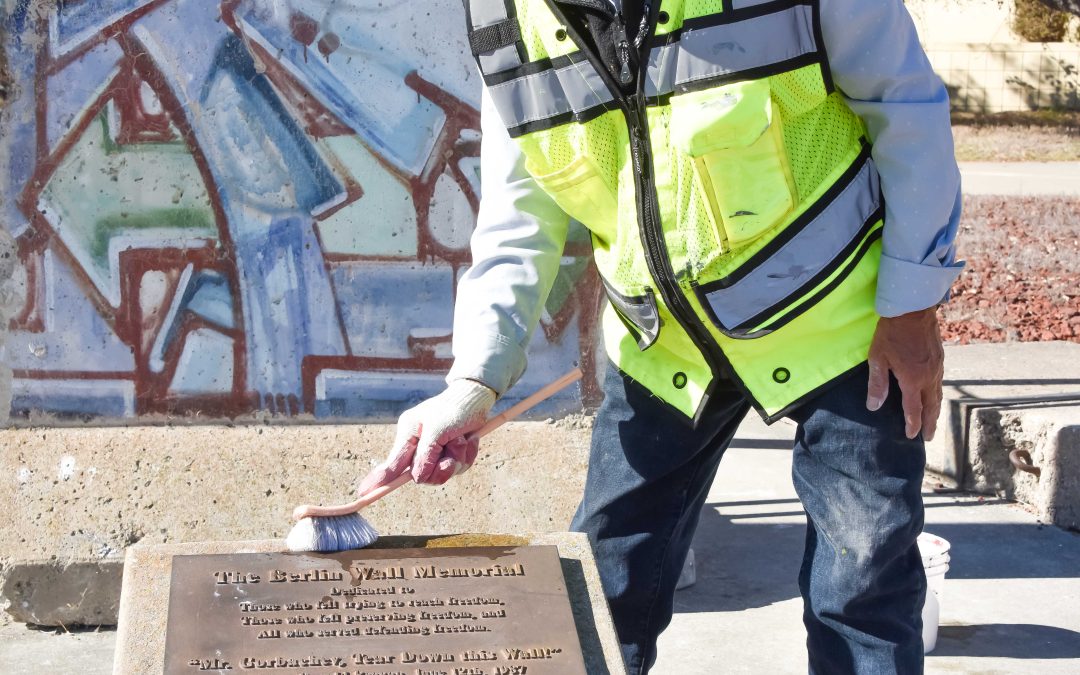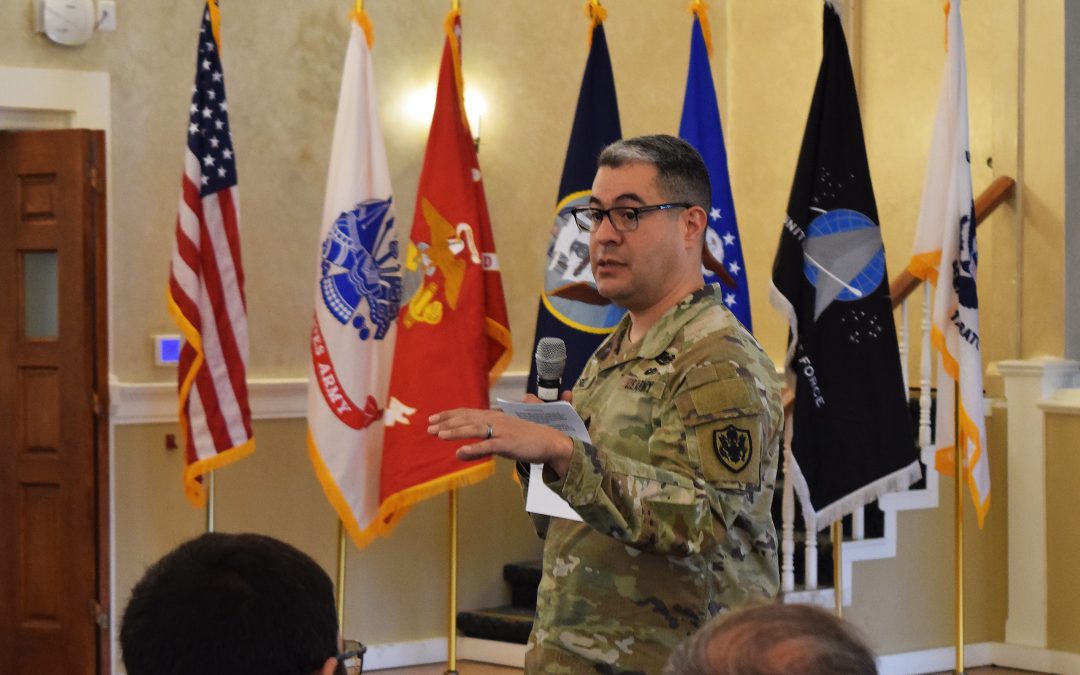By Patrick Bray
DLIFLC Public Affairs
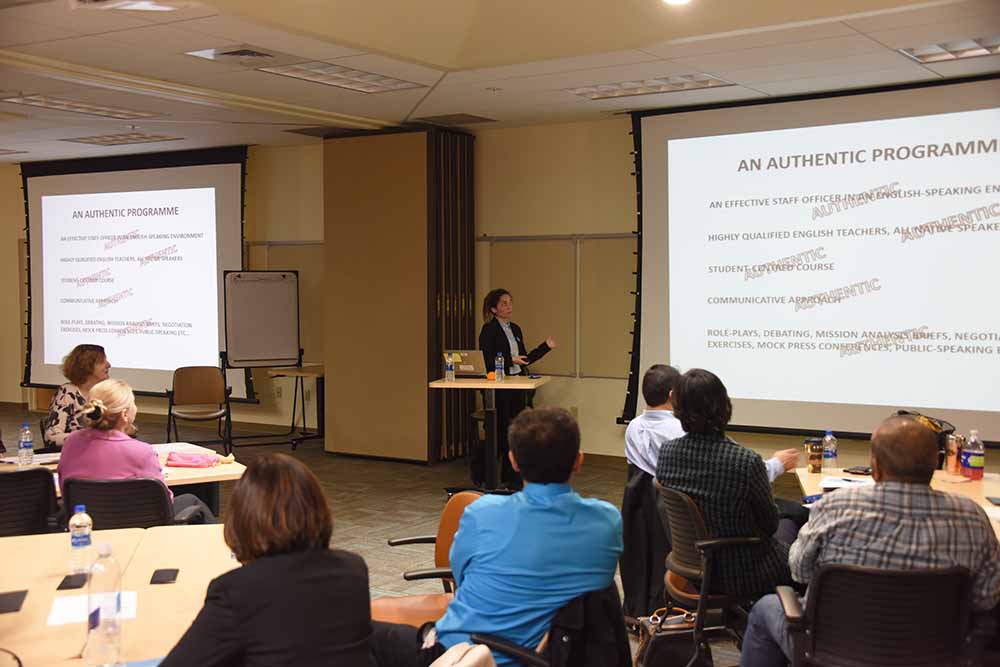
Emilie Cleret, the dean of the English department at the French War College, Paris, presents at the Defense Language Institute Foreign Language Center Advanced Language Academy March 22. She and Jerome Collin, the dean of the French department at the French War College, visited DLIFLC March 20-22. (U.S. Army photo by Patrick Bray/Released)
MONTEREY, Calif. – Jerome Collin, the dean of the French department at the Ecole de Guerre, Paris, or French War College, and Emilie Cleret, the dean of the English department, visited the Defense Language Institute Foreign Language Center March 20-22.
The French War College is a highly prestigious graduate school for officers within the French Armed Forces and is similar to the U.S. Army War College and those of other services. Training also includes language education in French and English.
“It was an absolute pleasure to host faculty members of the French War College. We have been collaborating with their College for about three years now, as a result of meeting them at the annual Bureau of International Language Coordination summits which we participate in,” said Associate Provost of Academic Support, Detlev Kesten.
Collin observed French classes being taught at DLIFLC and met with students and faculty, while Cleret attended the DLIFLC Advanced Language Academy. She also presented at the academy on the subject of transformative pedagogy for learners at higher levels March 22.
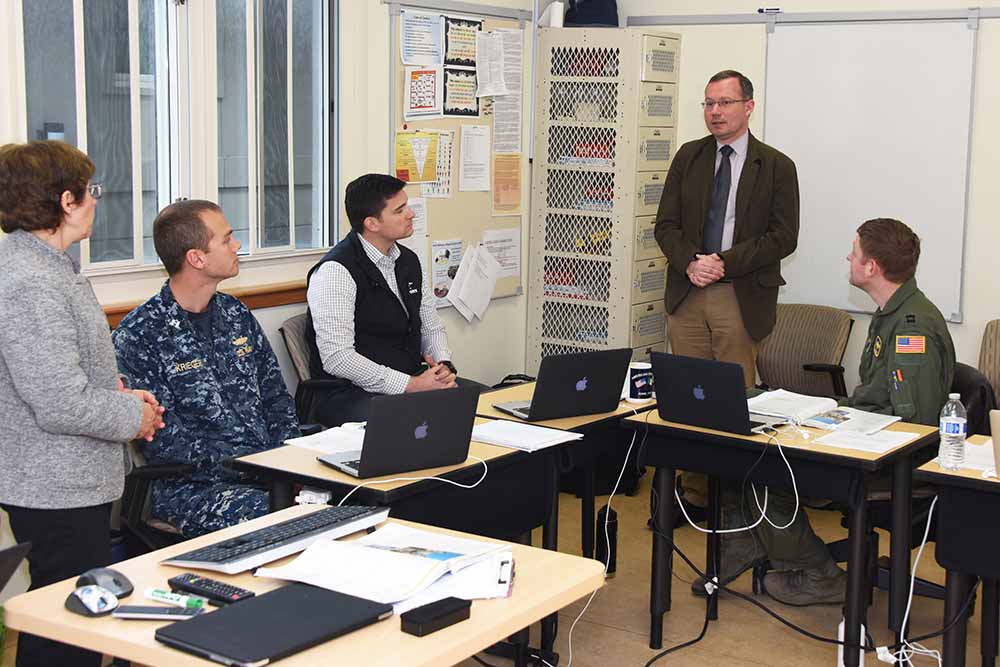
Jerome Collin, the dean of the French department at the French War College, Paris, observed French classes being taught at the Defense Language Institute Foreign Language Center March 20-22. (U.S. Army photo by Patrick Bray/Released)
Transformative pedagogy was previously presented by former DLIFLC Provost, Dr. Betty-Lou Leaver, at the BILC conference in Riga, Latvia, May 2016.
Students who attend the War College are usually at the mid-point of their career and selected by a competitive admission exam. Once they complete their course work, they usually go on to high level appointments within the French military. Two thirds of the students are French learning English, while the rest are foreign officers learning French.
DLIFLC provides resident instruction in 17 languages at the Presidio of Monterey, California, with the capacity to instruct another 65 languages in Washington, D.C. The Institute has graduated more than 220,000 linguists since 1941.
In addition, multiple language training detachments exists at sites in the U.S., Europe, Hawaii and Korea, spanning all the U.S. geographic combatant commands in support of the total force.

